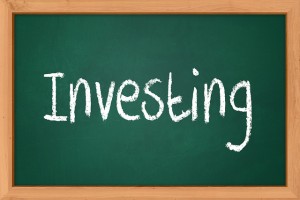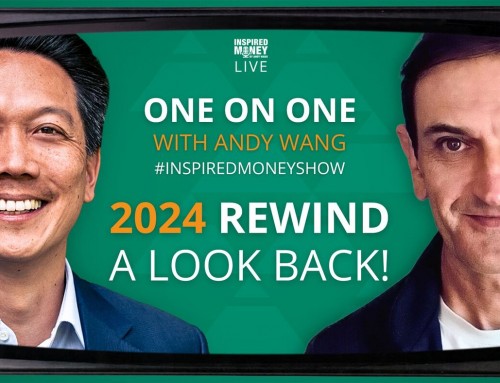
In my 15 years as an investment adviser, I have reviewed many portfolios. Typically, these situations arise when engaging with a new client or reviewing a current client's funds outside of my advisement, e.g. 401(k). Sometimes, a prospective client asks me to perform a portfolio review like a patient seeks out a second opinion. Whatever the occasion, I enjoy the opportunity to look at another adviser's work which often provides insight into his/her investment philosophy, background, and approach. We work with a diverse clientele with widely varying investment needs and objectives. Whether the portfolio belongs to an individual, non-profit organization, or captive insurance company, there are recurring themes that I find and would handle differently. Here are four common portfolio mistakes that you should avoid.
Inappropriate Asset Mix
Perhaps you have heard the often repeated statement that “90% of your return can be explained by your asset allocation.” This is actually a misconception. A widely mischaracterized study “Determinants of Portfolio Performance” (1986) gave rise to this notion but the authors actually found that a pension plan's long-term asset allocation accounted for 93.6% of the volatility of returns from quarter to quarter.There is a distinct difference between volatility and performance.
Nevertheless, how you allocate your assets among stocks, bonds, cash, and other alternatives matters. I have seen too many cases where a 75-year old retiree is 100% in equities. While the potential total return may be high, the losses incurred from a bear market like in 2008 is extremely difficult to stomach. While age, balance sheet, income needs, and personality come into consideration, generally, a retiree should never only own stocks.
The rule of thumb used to be that you should subtract your age from 100 – and that's the percentage of your portfolio that you should keep in stocks. For example, if you're 60, you should allocate 40% of your portfolio in stocks. However, with Americans living longer, many financial planners are now recommending that the rule should be closer to 110 or 120 minus your age. If you need to make your money last longer, you willl need the extra growth that stocks can provide.
Incorrect Diversification
The consensus agrees that diversification is a good thing because it reduces risk. I often see portfolios that have a significant weighting in a single stock – most often because it was inherited from a parent or relative. One stock that represents 40% or more of a portfolio can have too large an impact on performance of the overall portfolio so these situations need to be evaluated and addressed.
The opposite problem, one that I see more frequently, is over diversification or “diworsification.” Most academic research says that owning 20-30 stocks eliminates unsystematic risk, or the need to own any more stocks to diversify your risk of concentration.
According to a study from Morningstar, the average mutual fund holds close to 200 stocks. Typically, I find that investors hold eight mutual funds, on average, meaning that they own at least 1,500 stocks. With the growth of Exchange Traded Funds (ETFs), this phenomenon is compounded. The result is duplication, more expenses, and a portfolio with too much clutter. Here are Warren Buffett's thoughts on the subject.
We have to work extremely hard to find just a very few attractive investment situations. Among the few we do find, the expectations vary substantially. . . . There is one thing of which I can assure you. If good performance of the fund is even a minor objective, any portfolio encompassing one hundred stocks is not being operated logically. The addition of the one hundredth stock simply can’t reduce the potential variance in portfolio performance sufficiently to compensate for the negative effect its inclusion has on the overall portfolio expectation. Anyone owning such numbers of securities after presumably studying their investment merit is following what I call the Noah School of Investing — two of everything. Such investors should be piloting arks. While Noah may have been acting in accord with certain time-tested biological principles, the investors have left the track regarding mathematical principles.
– Warren Buffett, 1965 Shareholder Letter
Paying High Fees
In a recent AARP survey, a shocking 71% responded that they didn’t pay any fees for their 401(k) mutual fund investments. The financial services industry is complicated so many investors do not understand the fees that mutual funds charge. Many fees are hidden or embedded meaning that mutual fund investors never receive a bill for fees – it's adjusted in the net asset value. Also, be aware that an adviser who allocates funds to other managers results in higher layered fees. When it comes to mutual funds, owning no load mutual funds (no sales charge) does not mean that you are not paying annual expenses! Average mutual funds management fees are 1.1% but can exceed 3.0%. Read our articles “Know Your Mutual Fund Fees and Expenses” and “How much are your mutual fund fees? Much more than you realize!” to learn more.
Looking Backward, Not Forward
Because of our professionals' backgrounds in equity research at my firm, we take pride in our skill to review portfolios of individual stocks. While I often find companies that are familiar and recognizable, they are often “yesterday's” stocks. It's like uncovering a portfolio that has been stored in a time capsule.
I believe strongly that earnings growth correlates to stock price over the long-term. Therefore, it is important to weed out companies whose growth prospects are limited. My industry already often relies on historical data, looking in the rear view mirror, when devising asset allocation. Don't do the same thing stock by stock. You want to own companies with excellent growth prospects.
Lastly, it is easy to become complacent with your investment portfolio and attached to the companies in it. Do not hold on to losers for too long. Losses have a tendancy to grow so be willing and open to upgrading those stock ideas that are not working.
Next Steps
I hope this article helps you think about and evaluate your own portfolio. If you feel the need for a second opinion, please contact me or click below for a free Portfolio X-Ray. I wish you good health and wealth!
What portfolio mistakes have you made? How have you made corrections?
photo credit: StockMonkeys.com via photopin cc
By





